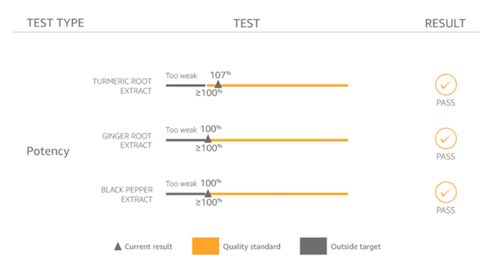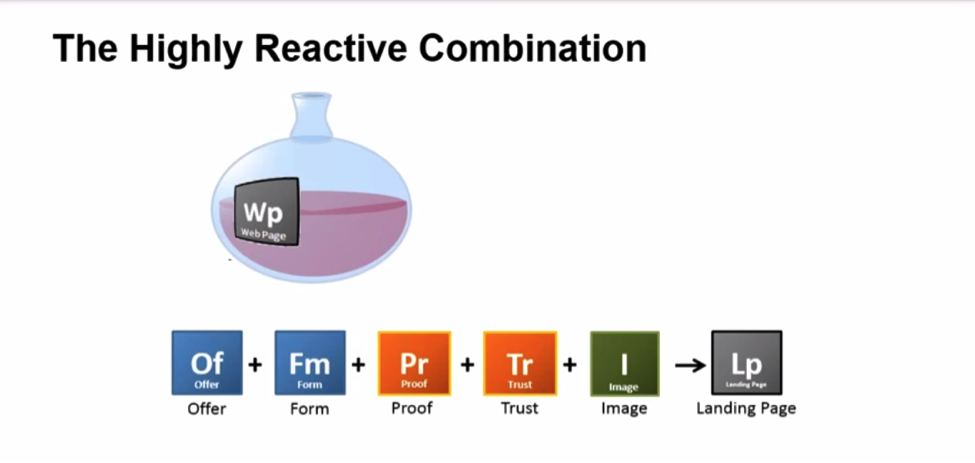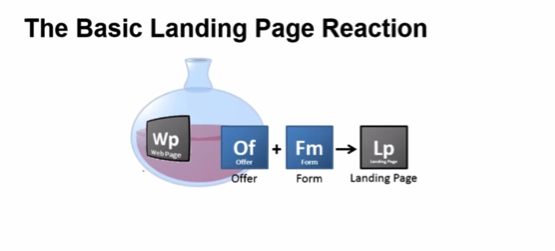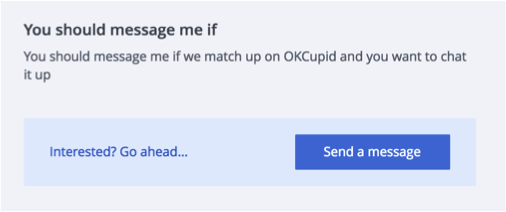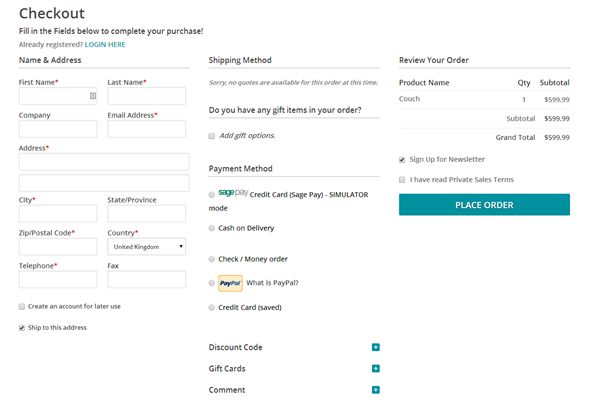People are willing to pay more websites they trust. Establish credibility online to boost your online conversion rate.
When selling anything online people almost always prefer to buy from people and companies that they trust. In fact, many times people are willing to pay more to buy from websites they trust. It’s one of those key components that can boost your online conversion rate in multiples if done right so you need to instantly establish credibility online.
I’ve been working in the field of conversion optimization for 9 years. About 6 years ago, I made the decision to focus my agency primarily on optimizing websites that were specifically in the health field/vertical, mostly dietary supplements.
We niched down to optimizing for the health industry because we started seeing patterns among multiple dietary supplement clients. Those patterns lead us down a path of researching how people buy health supplements differently than they buy any other type of product.
The health field, especially natural health supplements, can be a pretty tough field to sell products directly online. There are a lot of FDA compliant and legal issues to watch out for if you don’t want to be shut down. Although there are certainly more than the fair share of claims out there on the internet that cross the line. That combined with so much misinformation and it’s no wonder that so many people tend to feel a little bit leery about trusting holistic health and supplement products.
The sad thing is, a lot of these products are actually really, really good for you and really beneficial. They’re often derived from natural products that have incredible benefits with minimal side effects.
But how do you get that across? Especially when you can’t afford to do a double-blind scientific test?.
I’ve developed some strong strategies for developing trust and establish credibility online between my clients and their website visitors.
Here are a few ways that you might be able to accomplish the same goals in your specific industry…
To Establish Credibility Online: Be Completely Transparent With Your Audience
One way I do that is by making sure that the website is as transparent as possible. Putting it all out there may show some vulnerability, but it also conveys honesty.
Reveal the ingredients that are in your products by showing the full supplement facts label. Don’t hide behind a “proprietary blend”.
Also, let them know where those ingredients are sourced from.
- What’s the potency, purity, and integrity of the ingredients?
- Where are your ingredients sourced from? Where is your dietary supplement manufactured and bottled? Was it made in a GMP facility?
- What is your return policy? And provided them with a top-notch FAQ section.
Make Reasonable Claims and Back Them Up With Proof
Some holistic herbs and supplements claim that they can solve every problem under the sun in one little pill – from helping you to lose weight to providing a cure for cancer. (Even though the word “cure” is not allowed by the FDA.)
We all know it’s probably not likely that one pill can solve all these problems. Even if it’s true, trust breakdown with multiple claims or condition solutions. It’s better to focus on the power of one. One story, one problem, one solution. So don’t make broad outrageous claims. And when you do make claims, be sure that you are backing them up with proof.
If you really concentrate your focus on the things your product can do and go into great detail with facts that support that – then it’s more likely that you’ll be believed.
I’m sure you’ve probably heard a million weight loss remedies that will help you lose weight quickly. But when you’re bombarded with so many messages, how do you even begin to know which ones might actually work?
There’s not enough time in the day to try them all out. And who wants to spend the money on each one?
But if you do your research and look closely, some of the suggestions are backed up by actual science.
For example, did you know that grapefruit stimulates the production of a hormone called adiponectin, which is involved in the breakdown of body fat?
Ok, now that’s something to go on, right? Actual science. I’m in.
This is the same kind of confirmation that your visitors need and want. They don’t want to have blind faith and just believe what you say or try a million products to see which really works. Most people don’t have that kind of money or time to spend.
So give them proof. Establish credibility online. It may already be there and you just don’t know it.
Another Example that Fails to Establish Credibility Online
For example, we were recently analyzing a landing page for a healthy chocolate chip cookie.
The cookie claimed to be healthy – but the nutrition label that they displayed on their website really wasn’t all that impressive.
It listed some protein and some calcium – but other than that it was hard to justify spending the money.
They went on to list the healthy ingredients – flaxseed and chia seeds which are rich in antioxidants and omega 3’s. And coconut oil that boosts the immune system and helps you lose weight.
But they didn’t bridge the gap so that it made sense. They didn’t tell their visitors why these ingredients were so healthy. In fact, they’re so healthy that they’re often referenced as “superfoods”.
If prospects weren’t aware of these benefits, listing the ingredients meant absolutely nothing. So don’t assume. Don’t assume that they know why something is good for them. Just because you know, doesn’t mean that they do.
To Instantly Establish Credibility Online, Be Vulnerable
This is why you need to make sure that you tell them everything.
And if there’s something that your product or service can’t do. Don’t be afraid or too proud to admit it. By being honest about what you can offer, it really comes off more as trustworthy than incompetent actually. By honestly admitting that you can’t do a particular thing – your visitors will now believe you when you say that you can do other things really well.
Don’t Unintentionally Plant Seeds Of Doubt
This is something that I see often.
Websites try to establish trust by making statements such as “No gimmicks” or “Those other products are scams. We can be trusted.”
While you may actually be very trustworthy, you’ve just reminded your visitors that some of these products are a complete hoax. Possibly even a sugar placebo.
So now that you’ve mentioned “gimmick”… now they’re not so sure about you .
Here’s what happens. Your visitors are going about their business gathering information so they can make an informed decision about your product or service.
When they see words like “gimmick” or “scam” red flags may start to go up. Those thoughts might not have been in their minds in the first place. But since you’ve now put them out their boldly in print… now they are.
Planting these types of thoughts in your visitor’s heads could be very risky. Your very attempt to gain trust in this way may backfire big time.
That said, this type of copy should be tested with your audience to see if it yields positive or negative results.
Other Standard Ways To Establish Trust
So those are some of the areas in the health vertical where trust needs to be established in a very specific way. Hopefully, these techniques might help you in your vertical as well.
But be sure that you are also implementing these other critical trust indicators as well.
Social Proof Establishes Credibility Online
Consumers are still looking for the social proof of a third party to help convince them that your products and services are the right choices.
Add testimonials and reviews.
Another way to add social proof is by adding social media count boxes. The boxes that display the number of people that have liked you. Those can’t be faked.
LinkedIn testimonials also can’t be faked. Members are the ones who write the actual recommendation and they are then displayed on your profile.
And if you can get an expert endorsement. You’re golden.
In fact, tout yourself as an expert too. Make the effort to write blog articles that will highlight you as someone who knows what they’re talking about.
If your product or service has an average success rate – boldly highlight that. It’s amazing how often I see businesses forget to include this information.
I once worked with an insurance agency that required prospects to apply for approval to receive a special discount. People are often worried when they’re credit is going to be checked. It adds an additional layer of anxiety that they just don’t want to deal with. So they don’t.
But this agency had a 97% approval rate. But they failed to mention that.
Adding such information makes the reader feel a little bit more secure that they just might be approved. So they take the risk.
Share Details About Yourself
Make sure you are providing an About Us page where you can highlight your team and their credentials.
There are always going to be a percentage of your audience that wants to know more about the people behind your business before they move forward with a transaction.
When I’m analyzing heat maps, it always amazes me just how many people are clicking on About Us links to find out more.
And don’t forget to include real-world data such as a physical address and contact information when you can. Hiding this information can not only be frustrating, but it can also make your visitors question whether or not you are a legitimate business.
How to Instantly Establish Credibility Online: Security
I’m sure you know by now how important it is to create a secure environment if you’re selling online.
To ensure that your website is secure – your website address will start with “https” rather than just “http”. The “s” at the end means “secure”.
Nowadays, it’s also highlighted in the address bar with green text and the actual word “Secure”. So make sure your website’s address looks like this in the address bar.
Because sometimes you’d be surprised to see what’s displayed here. I was surprised to see this in the address bar for cnn.com.
Perhaps they are not selling anything online. But it’s always a good measure to make this read as secured.
Also, make sure that you are are displaying trust seals that verify that you are a legitimate business and also verify that your site is secure.
Visual indicators such as padlocks also help to create a sense of security. Both of these can be really important at the point of checkout where visitors feel most vulnerable.
We Only Buy A Second Time From Those We Trust
Now you see why gaining trust and establishing credibility is an all-encompassing task. A task that’s going to pay off in the end.
So make sure you’re providing all the information you can to help your visitors make an informed decision. Don’t make outrageous claims. And when you do make claims, try to back them up with proof.
Don’t scare visitors away by unintentionally planting seeds of doubt. And don’t forget to include standard trust indicators such as real-world data and security seals and security indicators.

